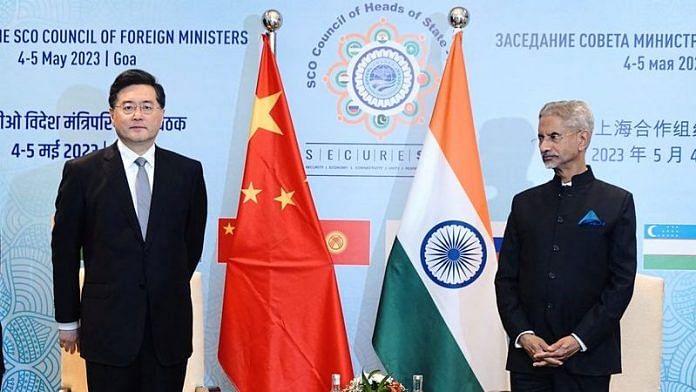The diplomatic relations between India and China have been further downgraded with the expulsion of the last remaining Indian journalist reporting from Beijing. According to a report in Bloomberg, KJM Varma, a reporter with the Press Trust of India, has been asked to leave the mainland by the end of the month.
With this, China will not have a single Indian journalist reporting from the country, down from four. The other three journalists — from Hindustan Times, The Hindu, and Prasar Bharati — were either asked to leave the country or their visa renewal applications were denied. Moreover, it seems unimaginable for Indian media organisations to hire Chinese staff to report from the mainland.
The Chinese state media has cried foul over visa difficulties faced by its journalists based in India, but the issue of access to journalists was always tipped in favour of Beijing. Chinese state-backed and semi-independent news outlets such as CGTN and Phoenix TV continue to operate from India with locally hired staff.
Indian journalists were present in Beijing even during the 1962 war. Getting official accreditation as a journalist has always been part of a diplomatic bargain where both China and India allow a set of journalists to report from the country. But the recent developments are unprecedented.
The tensions that persist over the visa row can be gauged by an authoritative op-ed for Xinhua News Agency, written by the organisation’s former bureau chief based in New Delhi. Hu Xiaoming’s article discussing “persistent visa hassle” that he and his colleagues faced in India was published in China Daily and cited by Wang Wenbin, the spokesperson for the Chinese foreign ministry, during a press conference on 12 June.
“The Indian government’s brutal treatment has put enormous psychological pressure on Chinese journalists in India,” Hu wrote, saying visa applications from Chinese journalists have not been approved since 2020.
Hu’s op-ed also outlines the ‘problems’ of short-term visas issued to Chinese journalists and the difficulties of obtaining a local bank account despite staying in the country for the long term. The allegations aired in Hu’s op-ed are a significant development as Chinese state media rarely publishes such pointed criticism targeting India – especially about the visa policy for journalists.
But Hu doesn’t tell us how the latest row over journalist visas started.
Also read: What dominates Chinese chatter on India—economy, cheaper medicine
Not just an India-China issue
Indian officials told Bloomberg that the dispute arose when China imposed limitations on the hiring of local staff by Indian journalists — only three from a pool of ‘approved’ staff members.
The Ministry of External Affairs (MEA) has spoken about it in an official statement. “Chinese journalists in India have no difficulties in reporting. However, Indian journalists in China have been operating with difficulties – such as not being permitted to hire locals as correspondents or journalists,” said MEA spokesperson Arindam Bagchi.
Former ambassador to China and former foreign secretary Nirupama Rao, too, has raised the alarm about the severity of the visa row. “This is the worst time I’ve seen in my living memory in India-China relations. And I’m not exaggerating. It’s serious,” she said in a tweet.
The lopsided access for Chinese media organisations extends beyond India and is also observed in Europe and Canada, where Chinese journalists — both Chinese nationals and local staff — continue to operate in large numbers despite geopolitical tensions. In contrast, access to Western media outlets in China has been severely curtailed.
The seriousness of the issue can be understood from the US-China journalist visa row of 2020. An op-ed referring to China as the ‘Sick Man of Asia’ resulted in the eviction of a large cohort of US journalists from China. Despite the heightened geopolitical tensions between the two countries, some American journalists managed to remain in Beijing.
After formal diplomatic personnel, accredited foreign correspondents act as envoys of their respective countries. The downgrading of journalistic contact marks a significant step towards further deterioration of India-China relations.
Even if we believe some of China’s allegations regarding visa restrictions, Chinese journalists still have the option to hire local Indian staff and carry out their reporting activities – if that’s what China’s state media is present in India to do. Chinese state media organisations such as Xinhua carry out various information-gathering activities at the behest of Beijing, unlike Indian journalists stationed in Beijing. Employees of the Xinhua News Agency directly report to China’s State Council and the Communist Party of China’s Propaganda and Public Information Departments.
The expulsion of Indian journalists from Beijing has left Indian media organisations in a blind state. With the latest spat, the rift between India and China is as wide now as the vast expanse of the Himalayas. A bridge, for now, has been burnt.
The author is a columnist and a freelance journalist. He was previously a China media journalist at the BBC World Service. He is currently a MOFA Taiwan Fellow based in Taipei and tweets @aadilbrar. Views are personal.
(Edited by Prashant)



